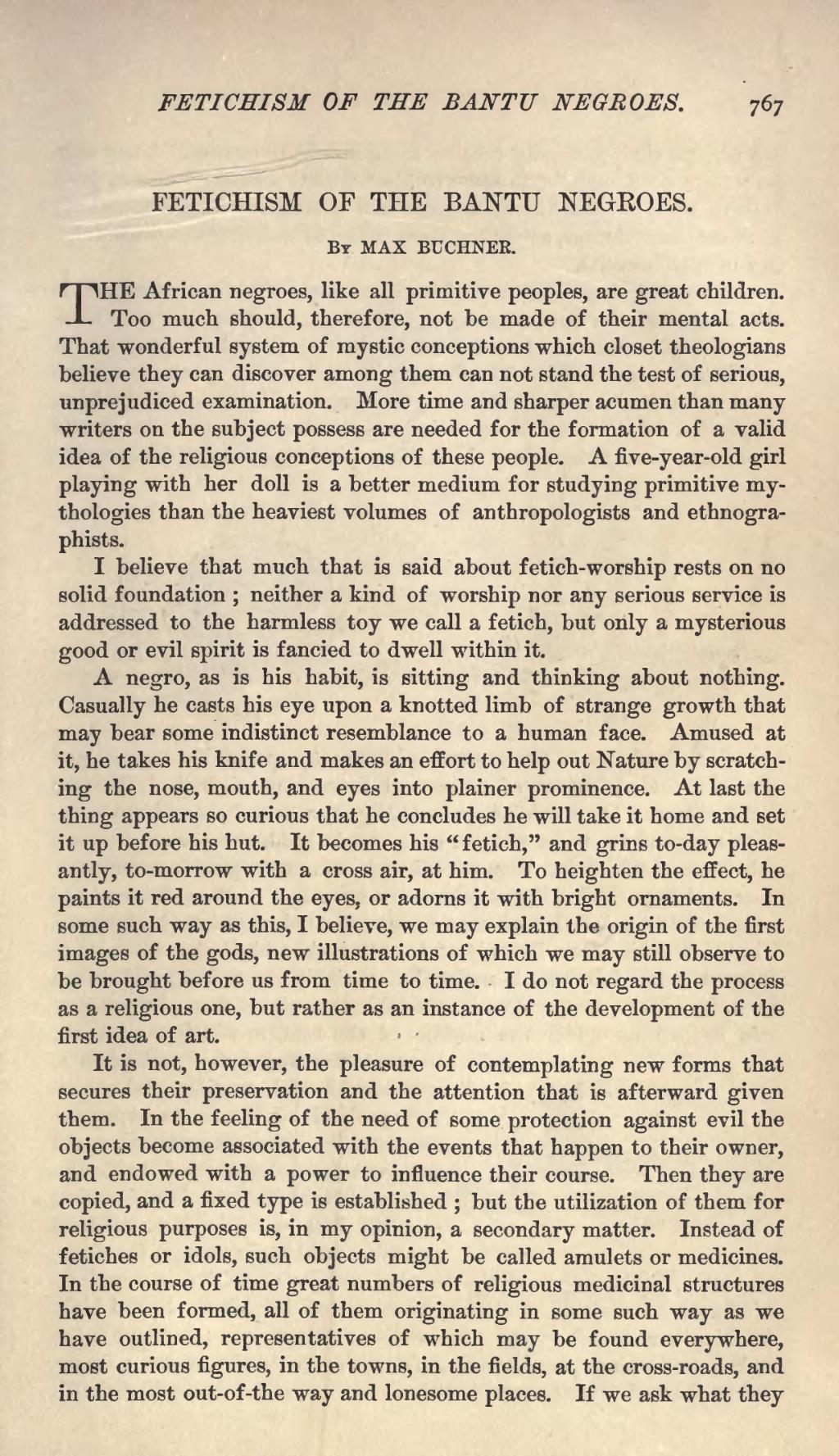| FETICHISM OF THE BANTU NEGROES. |
By MAX BUCHNER.
THE African negroes, like all primitive peoples, are great children. Too much should, therefore, not be made of their mental acts. That wonderful system of mystic conceptions which closet theologians believe they can discover among them can not stand the test of serious, unprejudiced examination. More time and sharper acumen than many writers on the subject possess are needed for the formation of a valid idea of the religious conceptions of these people. A five-year-old girl playing with her doll is a better medium for studying primitive mythologies than the heaviest volumes of anthropologists and ethnographists.
I believe that much that is said about fetich-worship rests on no solid foundation; neither a kind of worship nor any serious service is addressed to the harmless toy we call a fetich, but only a mysterious good or evil spirit is fancied to dwell within it.
A negro, as is his habit, is sitting and thinking about nothing. Casually he casts his eye upon a knotted limb of strange growth that may bear some indistinct resemblance to a human face. Amused at it, he takes his knife and makes an effort to help out Nature by scratching the nose, mouth, and eyes into plainer prominence. At last the thing appears so curious that he concludes he will take it home and set it up before his hut. It becomes his "fetich," and grins to-day pleasantly, to-morrow with a cross air, at him. To heighten the effect, he paints it red around the eyes, or adorns it with bright ornaments. In some such way as this, I believe, we may explain the origin of the first images of the gods, new illustrations of which we may still observe to be brought before us from time to time. I do not regard the process as a religious one, but rather as an instance of the development of the first idea of art.
It is not, however, the pleasure of contemplating new forms that secures their preservation and the attention that is afterward given them. In the feeling of the need of some protection against evil the objects become associated with the events that happen to their owner, and endowed with a power to influence their course. Then they are copied, and a fixed type is established; but the utilization of them for religious purposes is, in my opinion, a secondary matter. Instead of fetiches or idols, such objects might be called amulets or medicines. In the course of time great numbers of religious medicinal structures have been formed, all of them originating in some such way as we have outlined, representatives of which may be found everywhere, most curious figures, in the towns, in the fields, at the cross-roads, and in the most out-of-the way and lonesome places. If we ask what they
